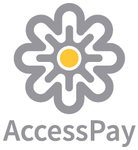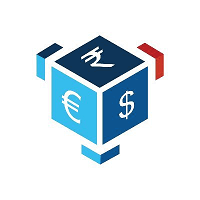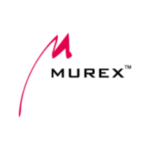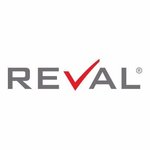Yes, most treasury software can be accessed from numerous devices and platforms using cloud-based solutions. This allows customers to access the program from any device with an internet connection, including laptops, tablets, and smartphones. The software's web-based interface provides interoperability with a variety of operating systems, including Windows, Mac, and mobile devices. This flexibility enables treasury personnel to easily manage their financial data from any place.
List of Best Treasury Software
BankSense is a financial management solution for businesses. Designed to simplify banking processes, enhance security, and provide real-time analytics, BankSense empowers companies to make informed decisions, optimize cash flow, and mitigate financia...Read More BankSense
Airwallex is a leading financial services provider that offers top-notch solutions for managing global payments. Our platform allows you to easily create accounts for optimizing online transactions and cross-border payments. Enjoy the convenience and...Read More Airwallex
Trovata, the top-notch cashflow management software designed for businesses. It streamlines financial processes, eliminates errors, and provides real-time insights for better decision making. With its ability to consolidate data from various banks, a...Read More Trovata
IBSFINtech - the leading TreasuryTech platform that offers comprehensive solutions for effectively managing Treasury, Risk, Trade Finance, and Supply Chain Finance. Empower yourself with advanced features that provide improved oversight, streamlined...Read More IBSFINtech
Agicap is a cash management solution for your business. Say goodbye to worrying about cash flow with our powerful software that provides accurate forecasts and real-time tracking. Simplify your financing process and effortlessly stay on top of your c...Read More Agicap
Panax is a solution for cash flow and treasury management. With advanced capabilities, Panax enables seamless management of cash flow across all timeframes - past, present, and future. Crafted for efficient financial teams, it offers a complete range...Read More Panax
Kyriba Corporation is a finance software designed for effective treasury management. Its user-friendly interface and advanced features, including automated cost reduction, protection against cyber threats, compliance enforcement, and growth opportuni...Read More Kyriba
GTreasury is a leading treasury and risk management solution that empowers finance teams with advanced analytics and seamless processes. Our comprehensive software simplifies liquidity management, reduces risks, and drives business growth. Streamline...Read More GTreasury
Experience the leading treasury management solution in Italy with DocFinance. This software offers seamless integration with over 300 ERP systems and global banks, simplifying financial processes for optimized cash flow management. Designed for both...Read More DocFinance
Gia Docs - an innovative Intelligent Document Processing (IDP) solution specifically developed for simplifying complex document management in Global Accounts Receivable, Accounts Payable, and Treasury operations. Utilizing cutting-edge AI technology,...Read More Gia Docs - AI-Powered Intelligent Document Processing
MX.3 is a capital markets solution that streamlines trading, risk management, and operations with seamless integration. This powerful platform enables financial institutions to comply with regulations, enhance processes, and drive innovation. With cu...Read More MX.3
FXL Treasury Management is a solution that maximizes efficiency in your financial processes, improves liquidity management, and reduces risk. This groundbreaking software provides seamless integration, real-time analysis, and unparalleled control ove...Read More FXL Treasury Management
IVP Treasury solution for treasury management. This powerful software streamlines operations, boosts productivity, and delivers cutting-edge analytics. Perfectly designed for top-notch investment firms, it ensures optimal performance and seamless int...Read More IVP Treasury
Calypso Treasury software solution designed to optimize treasury operations and promote growth for financial institutions. With its cutting-edge technology, businesses can easily manage risk and comply with regulations, leading to increased efficienc...Read More Calypso Treasury
A Treasury and Risk Management software, setting a new benchmark in the industry. Streamline financial operations and improve accuracy with advanced features, driving enhanced efficiency. Empower your business to effectively manage risks and optimize...Read More Treasury and Risk Management
CashAnalytics is a software solution that simplifies and enhances your cash flow forecasting and reporting tasks. With real-time visibility and actionable insights, it empowers you to make well-informed decisions effortlessly. By seamlessly integrati...Read More CashAnalytics
Reval - an advanced SaaS platform designed to optimize cash, liquidity, and financial risk management for enterprises. With robust features for hedge accounting and meeting regulatory requirements, Reval offers seamless integration with various finan...Read More Reval
Learn More About Treasury Software
- What Is Treasury Software?
- What Are The Recent Trends In Treasury Software?
- Benefits Of Using Treasury Software
- Important Factors To Consider While Purchasing Treasury Software?
- What Are The Key Features To Look For In Treasury Software?
- Why Do Businesses Need Treasury Software?
- How Much Time Is Required To Implement Treasury Software?
- What Is The Level Of Customization Available In Treasury Software?
- Which Industries Can Benefit The Most From Treasury Software?
- Conclusion
What Is Treasury Software?
Treasury software is a highly specialized financial management solution that helps organizations and enterprises of all kinds streamline their treasury operations. This software includes a complete set of features and functionalities geared toward increasing cash flow management, risk reduction, and overall financial performance. Cash management is a crucial feature of treasury software, allowing users to monitor cash balances in real time, estimate cash flow, and automate manual tasks like reconciliation and cash pooling.
This increases cash management efficiency and accuracy while decreasing potential errors and dangers. Furthermore, treasury software provides a suite of risk management features, allowing users to monitor and mitigate market, credit, and operational risks. These technologies offer real-time market data and analytics, allowing users to make informed decisions and react rapidly to market changes. This can help organizations maximize their investment plans and protect themselves from financial losses.
Another essential component of treasury software is payment processing, which accepts a variety of payment methods including wire transfers, ACH, and electronic check payments. This not only simplifies the payment procedure for businesses, but also assures that funds are sent securely and efficiently. Furthermore, treasury software frequently connects with banks, financial institutions, and other systems, allowing for efficient data transfer and processing. This helps to avoid manual data entering and reduces the possibility of errors.
What Are The Recent Trends In Treasury Software?
Current Trends in Treasury Software: What Buyers Should Know In the continuously changing world of finance and treasury management, software plays an increasingly important role. Treasury software automates and streamlines the treasury management process, giving firms real-time visibility, increased accuracy, and better decision-making skills. With the growing demand for efficient and effective treasury administration, the treasury software market has grown significantly in recent years.
Let's explore, we will look into the latest trends in treasury software to assist buyers make informed selections for their businesses.
1. Cloud-Based Solutions: One of the most significant advancements in treasury software has been the rise of cloud-based solutions. These software solutions are hosted in the cloud, allowing enterprises to access them from anywhere, at any time, and on any device. With no hardware or installation requirements, cloud-based treasury software is a cost-effective and flexible solution for businesses of all sizes. Additionally, it allows for real-time collaboration, data sharing, and multi-bank connectivity, making it a popular choice among purchasers.
2. Automation And Integration: Automation is now the driving force behind treasury software development. With the growing volume and complexity of financial transactions, automation can assist streamline and speed up the treasury management process. The latest treasury software systems automate bank reporting, cash forecasting, payment processing, and a variety of other activities. Furthermore, connectivity with other financial systems, such as ERP and accounting software, is a growing trend in the Treasury software market. This integration allows for seamless data flow between several systems, reducing errors and increasing efficiency.
3. Advanced Analytics And Predictive Capabilities: Given the volume of data created by treasury operations, advanced analytics and predictive capabilities are required. The latest treasury software systems provide powerful analytical tools that allow firms to obtain insights and make data-driven choices. Furthermore, many treasury software systems now use artificial intelligence and machine learning technologies to forecast market trends and financial risks, giving businesses a competitive advantage in decision-making.
4. Security And Compliance: Because treasury management deals with sensitive financial data, firms must prioritize security and regulatory compliance. The most recent treasury software systems include extensive security features such as data encryption, user access limits, and audit trails to protect the safety of financial data. These software solutions also comply with a variety of regulatory standards, including GDPR and SOX, to assist firms in maintaining compliance.
Benefits Of Using Treasury Software
Treasury software provides several advantages to firms, making it an indispensable tool for financial administration. It simplifies and automates different processes, resulting in a user-friendly and effective solution for cash management and treasury operations.
Here are some significant advantages of adopting treasury software.
1. Improved Cash Control And Forecasting: Treasury software offers real-time visibility into all cash movements, allowing firms to precisely track and estimate their cash situations. This enables more informed decisions about investments, payments, and liquidity management, ultimately enhancing financial control.
2. Increased Efficiency And Accuracy: Manual cash management operations are error-prone and time-consuming. Treasury software automates these procedures, which reduces errors and saves time. It also eliminates the need for several spreadsheets and manual reconciliations, which simplifies processes and boosts overall efficiency.
3. Improved Risk Management: Treasury software's advanced risk management tools help organizations remain on top of potential market and credit problems. It offers market intelligence, automated hedging, and compliance tracking solutions to help organizations manage and mitigate risks.
4. Cost Savings: By automating operations and providing reliable data, treasury software helps firms save money. It lowers the need for additional staff, manual data entry, and potential errors that could result in financial losses. Furthermore, it provides complete reporting tools for monitoring expenses and discovering cost-saving opportunities.
5. Seamless Integration And Scalability: Many treasury software solutions integrate seamlessly with accounting and ERP systems, making it easy to transmit data between platforms. This saves time and effort while maintaining data accuracy. Furthermore, most treasury software can be scaled up or down, making it appropriate for enterprises of any size.
6. Improved Compliance And Security: Treasury software frequently includes compliance and security features, ensuring that firms satisfy legal standards and safeguard sensitive information. Treasury software offers full compliance and security solutions, ranging from fraud detection to compliance document management.
Important Factors To Consider While Purchasing Treasury Software?
When choosing treasury software, purchasers should examine several critical factors. These considerations will help to guarantee that the software fits their specific requirements while also providing the necessary features and capabilities for effective treasury administration.
The following are some of the most significant elements to consider while making a purchasing decision:
1. Cost: One of the first things buyers should think about is the cost of treasury software. This covers both one-time expenditures, such as the initial purchase price and any implementation fees, and ongoing costs, including maintenance and support fees. It is critical to compare the cost to the budget and the estimated return on investment (ROI) for software. Buyers should also question about any potential hidden expenditures, such as add-ons or upgrades, to avoid surprises later on.
2. Features And Functionality: The primary purpose of purchasing treasury software is to optimize and automate numerous treasury procedures. Therefore, it is critical to properly analyze the features and functionality of the software. Buyers should develop a list of their individual requirements and compare them to the functionality provided by the software. This will help to verify that the software fits both their present and future requirements.
3. Integration: Most businesses already have established systems in place, such as accounting or ERP systems. As a result, it is critical to assess the compatibility and integration capabilities of the treasury software with various systems. This ensures that data is easily exchanged and shared between systems, avoiding bottlenecks and data discrepancies.
4. Security And Compliance: Because Treasury software handles sensitive financial information, security is of the utmost importance. Buyers must ensure that the program includes suitable security features such as data encryption and user authentication. It is also critical that the software complies with applicable legislation and standards, such as Sarbanes-Oxley (SOX) and the Payment Card Industry Data Security Standard.
5. User-Friendliness: Another crucial consideration is the software's simplicity of use. Buyers should select software with a user-friendly interface and minimum training for staff to utilize it efficiently. The option to personalize workflows and reports can also save time and increase efficiency.
6. Customer Support: Treasury software, like all other software, may experience technical faults or require upgrades and maintenance. Buyers should therefore examine the vendor's customer service options, such as phone, email, or online support. It is also a good idea to seek for reviews or feedback from previous customers to assess the vendor's responsiveness and overall support quality.
What Are The Key Features To Look For In Treasury Software?
When it comes to handling treasury operations, the correct software may make a huge impact. However, with so many alternatives accessible, it can be difficult to determine which features to search for.
To make your decision easier, below are some important things to consider while selecting treasury software:
1. Integration Capabilities: The ability to integrate with other systems and platforms is critical for effective and precise treasury operations. Look for software that integrates seamlessly with your bank account, accounting software, and other financial tools.
2. Financial Flow Forecasting: This tool enables you to monitor your financial holdings in real time and forecast future cash flows. It can help you make more educated decisions and better manage your liquidity and cash reserves.
3. Automated Payments: The program should be able to automate payments, whether by wire transfer, ACH, or check. This not only saves time, but also lowers the likelihood of human error.
4. Bank Connectivity: Ensure that the program has strong links to several banks and financial organizations. This will make it easier to view your account information, make payments, and get real-time transaction updates.
5. Security And Compliance: Because treasury operations handle sensitive financial information, it is critical that the software be secure. Look for encryption, multi-factor authentication, and adherence to rules such as GDPR and SOC 2.
6. Reporting And Analytics: A decent treasury software should have customisable reports and dashboards that provide a complete picture of your financial data. This can help you recognize trends, detect potential dangers, and make data-driven decisions.
7. Support And Training: Before making a purchase, assess the amount of support and training provided by the software vendor. A reputable software business will provide resources and training to help you make the most of their product.
Why Do Businesses Need Treasury Software?
Businesses use treasury software because of its capacity to streamline and automate financial management procedures. This software is intended to assist organizations manage their cash flow, investments, and financial risks in an efficient and effective way.
Here are some significant reasons for firms to invest in treasury software:
1. Improved Cash Management: Treasury software gives firms real-time visibility into their cash holdings, allowing them to make more educated decisions about cash management. This includes projecting cash flow, estimating funding requirements, and identifying areas where cash might be optimized.
2. Improved Risk Management: Treasury software helps organizations monitor and manage financial risks like foreign exchange, interest rates, and credit. It provides risk analysis tools and supports with the implementation of risk mitigation techniques. This decreases the possibility of losses due to unexpected market fluctuations.
3. Improved Financial Reporting: Treasury software enables firms to generate accurate and comprehensive financial reports, giving them a clear picture of their financial health. These reports can be tailored to the specific needs of the organization and can assist in making data-driven decisions.
4. Improved Efficiency: Manual financial management methods are time-consuming and prone to human mistake. Many of these procedures are automated by treasury software, allowing finance personnel to focus on more critical work and lowering the chance of errors.
5. Line With Rules: Treasury software helps firms stay in line with financial regulations by providing tools for tracking and reporting compliance obligations. This decreases the likelihood of penalties and fines for noncompliance.
6. Integration With Other Systems: Treasury software can be integrated with other financial systems, such as accounting software, payment systems, and enterprise resource planning (ERPs), giving firms a comprehensive perspective of their financial operations.
How Much Time Is Required To Implement Treasury Software?
The implementation process for Treasury Software can vary depending on numerous aspects, including the software's complexity, the size of the company, and the level of customization needed. However, it takes an average of 4-6 weeks to properly integrate Treasury Software. During this time, the software vendor will collaborate with your organization to identify your specific requirements and customize the program accordingly.
They will also provide training and assistance to guarantee that the software is implemented smoothly and successfully. It is vital to note that the implementation period might be shortened or prolonged based on your organization's readiness and the level of team participation. A committed project team and open communication with the software vendor are critical for ensuring a timely and successful installation.
Furthermore, it is critical to properly assess the Treasury Software's features and capabilities before making a purchase. Look for a vendor who offers complete support and training to get you up and operating fast and efficiently. By following these principles and collaborating closely with the software vendor, you can save implementation time and begin reaping the benefits of Treasury Software sooner. Set realistic expectations and plan accordingly to maximize the return on your Treasury Software investment.
What Is The Level Of Customization Available In Treasury Software?
When selecting treasury software for your organization, it is critical to understand the extent of customisation available. This ensures that the program meets your exact demands and specifications. Some treasury software choices provide a great level of customisation, allowing you to adjust the program to your company's specific operations and workflow. This can include customizing reports and dashboards, as well as setting up alerts and notifications depending on specified criteria.
Other software may have less customization choices but offers a variety of pre-defined templates and setups to pick from. This can be advantageous for businesses who have simpler treasury operations or are just getting started with digital treasury management. It is also worth mentioning that certain treasury software suppliers provide further customization services for a cost.
This option may be handy for businesses that require a highly customized and specialized software solution. When looking at treasury software, make sure to inquire about the level of customization available and whether there are any additional expenses for customizing services. This will assist you in determining whether the program can properly satisfy your business requirements. Consider using demonstrations or trials to explore the software's customisation possibilities before making a final selection.
Which Industries Can Benefit The Most From Treasury Software?
Treasury software is an effective tool that uses technology to improve and automate numerous financial procedures within a business. With its complete features and advanced capabilities, this program is intended to assist organizations in more efficiently and accurately managing their cash flow, investments, and risk. While there are several advantages to employing treasury software, certain industries will profit the most from its deployment.
Let's explore, we'll look at which industries can profit most from treasury software.
1. Banks And Financial Services: As expected, banks and financial services lead the way in treasury software adoption. These industries handle a huge number of financial transactions and must follow tight regulatory rules. Treasury software streamlines time-consuming manual operations, minimizes the likelihood of human mistake, and assists banks and financial institutions in meeting compliance requirements.
2. Multinational Corporations, or MNCs: MNCs encounter severe cash management difficulties due to their international activities and transactions. Treasury software allows them to concentrate and consolidate their global cash holdings, monitor and manage foreign currency exposure, and limit the hazards of overseas transactions.
3. Manufacturing: The manufacturing business relies greatly on effective financial management. Manufacturers can use treasury software to automate their invoicing and payment processes, monitor cash flow, and manage working capital more efficiently. This leads to better financial control, higher efficiency, and profitability.
4. Retail And E-commerce: Retail and e-commerce organizations process a high number of credit card transactions on a regular basis. Treasury software interfaces with payment processors and banking systems, giving you real-time visibility into cash flows and streamlining payment operations. This can assist shops and e-commerce enterprises in improving their cash management and making sound financial decisions.
5. Healthcare: Managing cash flow and cash situations is crucial for healthcare firms, especially given the growing complexity of insurance and reimbursement processes. Treasury software provides full reporting and analysis capabilities, allowing healthcare providers to accurately track and manage cash flow, improve financial planning, and maintain compliance.
Conclusion
After considering the different capabilities, benefits, and considerations of treasury software, it is evident that this tool has the potential to significantly improve any business's financial administration. Treasury software is a great asset for any organization wanting to enhance its cash management since it can expedite procedures, increase visibility and control, and provide important insights.
However, before making a purchase, purchasers should carefully consider their individual goals and budget to determine which software solution will best meet their expectations. Conducting extensive research, seeking advice and demos, and comparing several options will assist buyers in making an informed selection and selecting the best treasury software for their organization. It is also critical to thoroughly analyze the vendor's reputation, customer service, and security procedures to create a dependable and secure alliance.
Investing in treasury software that is simple to integrate, user-friendly, and constantly updated will have a beneficial impact on the purchasing decision. Finally, treasury software provides numerous benefits to firms, ranging from increased operational efficiency to reduced expenses and risks. By taking into account all of the aspects discussed in this buyer's guide, customers can confidently select the best treasury software for their firm and drive financial success. Businesses that use the correct treasury software may successfully manage their cash, make data-driven choices, and easily meet their financial objectives.
Treasury Software FAQ's
Can Treasury Software Be Accessed Across Multiple Devices And Platforms?
Is Treasury Software Future-Proof And Adaptable To Emerging Technologies Like AI, Blockchain Or IoT?
Yes, current treasury software is intended to be future-proof and adaptable to new technologies like artificial intelligence, blockchain, and the Internet of Things. It is always evolving to include new technology and services, giving firms superior capabilities for managing their treasury and cash flow.
This enables firms to remain competitive while increasing overall efficiency and production. Treasury software's focus on innovation guarantees that organizations are well equipped for the future of finance.
Is There A Free Trial Offered To Assess Treasury Software Before Committing?
Yes, many treasury software suppliers provide free trial periods so that consumers can evaluate the product before committing to a purchase. These free trials normally run 14 to 30 days, allowing consumers to test out the features and assess if the program suits their requirements. Some suppliers may also provide a demo or test version that can be used without committing to a trial term. Before purchasing treasury software, it is always recommended that you try a free sample or demo.
Does Treasury Software Offer Data Security Features And Meet Regulatory Compliance Standards?
Yes, Treasury Software takes data security and regulatory compliance extremely seriously. Our software is built to the greatest security requirements, which include encryption techniques, multi-factor authentication, and secure data storage. Furthermore, we follow all applicable requirements, such as GDPR and SOX, to ensure the security of your sensitive financial information. You can rely on us to keep your data secure and consistent with industry standards.
Can Treasury Software Integrate Seamlessly With Existing Tools And Platforms?
Yes, treasury software can work easily alongside existing tools and systems. Most treasury software is designed to be easily connected with other systems, enabling data transfer and process automation. This integration ensures that all financial data remains consistent and correct across all platforms. Furthermore, the usage of APIs allows treasury software to seamlessly integrate with a number of tools and platforms, resulting in a more efficient and simplified treasury management process.



















